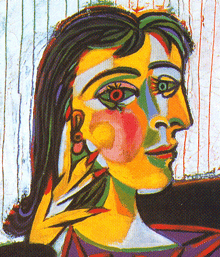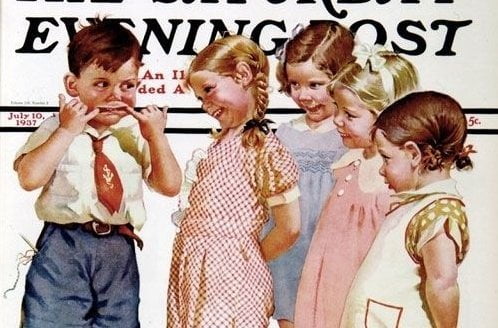Category: Cycle 3
-

Cycle 3 Week 14- Picasso’s Portraits
Pablo Picasso is one of the forerunners of Cubism, an art movement that began in the early 1900’s. He began painting subjects from multiple viewpoints, giving his work a blocky, fractured look. Words I would use to describe his work are messy, explosive, and even disturbing. Your students will have a lot to talk about…
-

Cycle 3 Week 1- North American Animal Drawings
My family and I took a road trip a few years back, following part of the route that Lewis and Clark took to the Pacific Ocean. We listened to the book Seaman: The Dog Who Explored the West with Lewis and Clark, visited the Lewis and Clark National Historical Park, and relaxed in the beauty…
-

Cycle 3 Week 18- Roy Lichtenstein
This will probably be one of your students’ favorite projects this year! Roy Lichtenstein’s paintings, inspired by comic strips, are colorful and bold and kids can immediately connect with his style. Lichtenstein’s paintings were large-scale, exaggerating the Ben-Day dot technique used to print colors at the time. We’ll use Q-tips and tempera paint to mimic…
-

Cycle Week 17- Andrew Wyeth
Andrew Wyeth has been one of my favorite artists for a long while now. For some reason I’m drawn to his melancholy, quiet pieces. Is that weird? Maybe a sign of deeper psychological issues? I don’t know, but I do like his stuff. Like Wyeth, we’ll be painting with watercolors. This medium is a challenge,…
-

Cycle 3 Week 15- Georgia O’Keeffe
For the next three weeks, the art lessons will focus on painting technique and color. This week, we will copy a painting by the famous American artist Georgia O’Keeffe. The focus will be on mixing colors smoothly on the canvas, and creating light and dark areas for dimension and contrast. O’Keeffe completed around two hundred…
-

Cycle 3 Week 16- Norman Rockwell
For me, Norman Rockwell’s illustrations do more than tell a story. They often convey something deep about life and human fragility. Yes, many of his drawings are humorous, but even then they contain so much more. They capture the emotions of the subject, the complexity of a seemingly everyday scene. We connect with the inner…
-

Cycle 3 Week 13- Grandma Moses
Starting out the “Great Artists” this year we have Grandma Moses. Her work is considered folk art, meaning her art pieces reflect her community, culture, and the everyday things around her. She was not a formally trained artist, and amazingly did not even begin painting until her late seventies. In her paintings we see the…
-

Cycle 3 Week 6- The White House (final drawing)
For the final drawing I usually don’t try and include all the concepts from the previous five weeks, but this year I gave it a go. In order to pound those pegs in a little deeper, this project will touch on mirror-image drawing, perspective, shading, and, just by its nature of being a drawing, OiLs.…
-

Cycle 3 Week 5- Washington Monument Perspective Drawing
This was my first week back to CC and, boy, am I feeling it. Maybe also because my husband has been gone for a week, I’m planning my daughter’s fifth birthday party, and I have four loads of laundry staring at me. Whatever the reason, I’m a little tired and I’m going to blame that…
-

Cycle 3 Week 4- Abstract American Flag
Since we are studying American artists later this year during the “Great Artists”, I wanted to incorporate some famous American abstract artists into this lesson as well. I’ve included examples of paintings by Calder, Rothko, and Johns. Jasper Johns (born May 15, 1930) created a painting called “Flag”, which, simply, is of the American flag.…